Introduction
This is a site about how best to build large-span roofs.
Looking at some of the existing large-span structures - e.g. on
http://largedomes.com/largest/
it appears that quite a large number of different approaches have
previously been employed to achieve large-spans.
The largest-span enclosed space in the world is in Oita,
Japan - the dome there has a diameter of 245 metres.
Bridges
However this figure doesn't look so significant when it is
compared to what bridge builders - the world's experts at
constructing large spans structure - can produce.
In the world of bridges, suspension bridges produce
all the largest spans in the world.
In terms of their potential for spanning large distances,
bridge designs stack up against each other something like
this:
- Suspension bridge: the largest spans 1989 metres;
- Cable-stayed bridge: the largest spans 890 metres;
- Arch bridge: the largest spans 550 metres;
- Cantilever bridge: the largest spans 549 metres;
To illustrate these approaches:
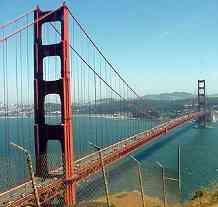
Suspension bridge
|
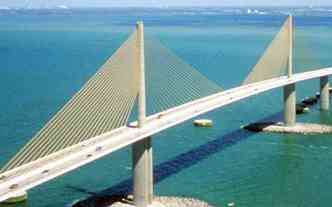
Cable-stayed bridge
|
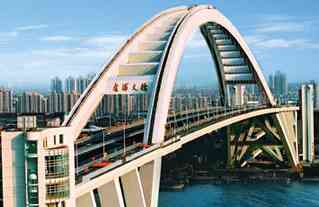
Arch bridge
|
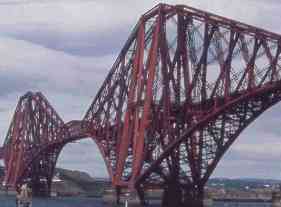
Cantilever bridge
|
Looking at the largest large-span arenas in the world, none
of them use the catenary suspension technology used in
suspension bridges.
A few use cable-stay technology - the largest of
which are the Muna Bulk Reservoir Cover (210 metres), and
The Millennium Dome (206 metres), and the Cardiff Millennium
Stadium (181 metres).
What type of technology do the domes use? There is
some variation - but here are some of the most common
principles:
Arches
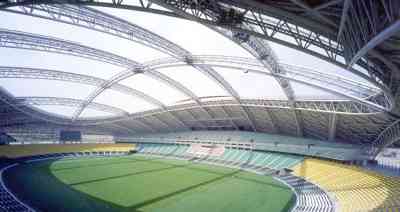 The principle of an arch is the principle on which the five
largest span domes in the world are constructed on.
The principle of an arch is the principle on which the five
largest span domes in the world are constructed on.
From the perspective of large-span bridges, using an arch is
not normally regarded as being very sensible. The largest
arch in the world is the Lupu Bridge. This spans 550 metres
- much smaller than cable-stayed bridges and
much much smaller than catenary-
suspension bridges.
The reason arches are so poor at spanning large distances
boils down to weight. Struts in compression have to be fat
and heavy to avoid buckling - and the effect accumulates -
if you make something in the middle of a bridge fat and
heavy the stresses on the components on either side are
increased - so they need to be fatter and heavier too.
So: why are dome builders still using this technology for
creating large spans? I have yet to hear a satisfying
reason given in answer to this question.
Aspension
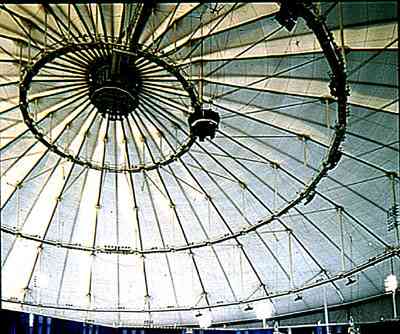 Another technology used by the dome builders that begins
to take advantage of the tensile properties of materials is
represented by structures such as the Tropicana field. This
is distributes struts along the length of the span - rather
than piling them up at each end as a suspension bridge does.
Another technology used by the dome builders that begins
to take advantage of the tensile properties of materials is
represented by structures such as the Tropicana field. This
is distributes struts along the length of the span - rather
than piling them up at each end as a suspension bridge does.
I will refer to this type of design as an "aspension"
structure - following the terminology of Buckminster Fuller,
who - as far as I can see - came up with the idea originally.
It is challenging to compare real aspension bridges to
suspension bridges - because no aspension bridges have
actually been constructed.
However, probably the main reason no aspension bridges have
been constructed is because the idea doesn't make much
sense.
Why would a designer distribute their compression members
along the bridge - where their weight has to be supported by
the cables - when they can pile them up at each end on solid
land - taking advantage of cheap-but-heavy materials such as
reinforced concrete - and in the process wind up with a
bridge which is much stronger - due to being anchored to
points far from the roadway?
Air support
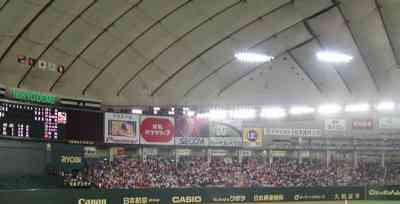 The next most common type of dome technology is the
air-supported dome.
The next most common type of dome technology is the
air-supported dome.
However, no large air-supported structures
have been constructed for decades.
The technology fell out of fashion - around the time when
aspension structures came into vogue.
Air-supported structures have some problems associated with
the inconvenience of maintaing internal pressure - and can
suffer from occasional deflations.
Suspension technology
The thesis of this site is that stadium constructors - and
other makers of large-span enclosures - would be well
advised to take a leaf out of the bridge builder's book -
and start making more use of suspension bridge technology
and cable-stayed structures.
For more details, go on to the
"why suspend" page.